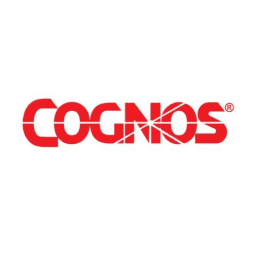In mid-December, when Ron Zambonini hosts the conference call for Cognos’ third quarter results, analysts and investors will know instantly how well the company has done by asking a single question: ‘Are you naked?’
The reason: back in October, the Cognos CEO promised to do the presentation in the nude if the company failed to sell at least $10 million worth of its new ReportNet enterprise query and reporting tool.
Whether the prospect of such a spectacle proves a powerful incentive to Cognos’ salesforce remains to be seen, but Zambonini’s threat reflects a confidence that the company can continue to prosper despite intensifying competition – and rapid consolidation – in the business intelligence (BI) software market.
The sector consolidation has certainly redrawn the BI map. Business Objects’ $820 million acquisition of reporting software company Crystal Decisions in July allowed Cognos’ traditional neck-and-neck competitor to pull ahead – at least in terms of size. Business Objects now has annual revenues of around $730 million compared to Cognos’s $551 million.
Another rival in the data query, analysis and reporting market – Brio – also gained much-needed momentum after it was bought for $142 million by analytical applications and platform vendor software vendor Hyperion Solutions.
While Cognos itself has not been idle in building up its portfolio – it acquired planning software vendor Adaytum earlier this year – but it still now needs to show that, if it is not bigger, at least it is better.
ReportNet is currently spearheading that effort. Launched in September, the new enterprise query and reporting tool has been three years in development. It was conceived and designed entirely from scratch to be fully web based, says Zambonini, taking advantage of recent developments such as dynamic HTML (DHTML). This has enabled Cognos to introduce a level of interactivity to the web browser that was previously impossible without unwieldy Java plug-ins.
“[Browser-based] dragging and dropping was impossible a year and a half ago. Now you can create a rich interface,” says Zambonini.
The flexibility of the tool will allow Cognos to target staff right across the enterprise – from the senior management in the accounts office to warehouse staff producing weekly inventory reports.
At that high end – where Hyperion has traditionally played – powerful reporting tools have become particularly important because the onerous demands of corporate governance laws – particularly the Sarbanes-Oxley Act in the US. Such pressure means that regulatory authorities and company boards are increasingly demanding reviews of all areas of activity.
Zambonini acknowledges that Hyperion’s Brio acquisition was a shrewd move.
“[Brio] is a neat product, but they haven’t had the capital to develop the product in the last couple of years,” says Zambonini. But it is the purchase of Business Objects’ Crystal Decisions buy-out that has Zambonini most perplexed.
While it does put Business Objects ahead of Cognos in the BI sector (only SAS Institute, with revenues of $1.18 billion is bigger), the overlap between the Business Objects and the Crystal Decisions product lines means that the combined entity – and its customers – face a period of product rationalisation. That, coupled with the fact that Cognos’ growth rate is running at 23% (compared to Business Objects’ 16% mid-Summer pace) may gives Cognos some scope to narrow the gap.










